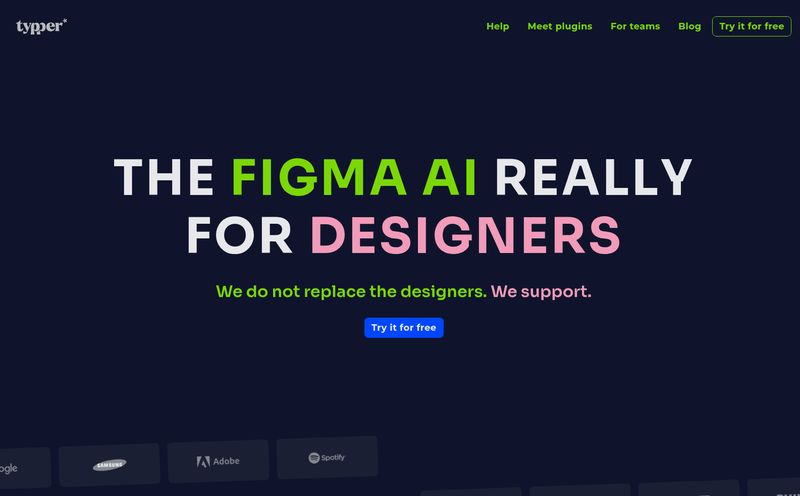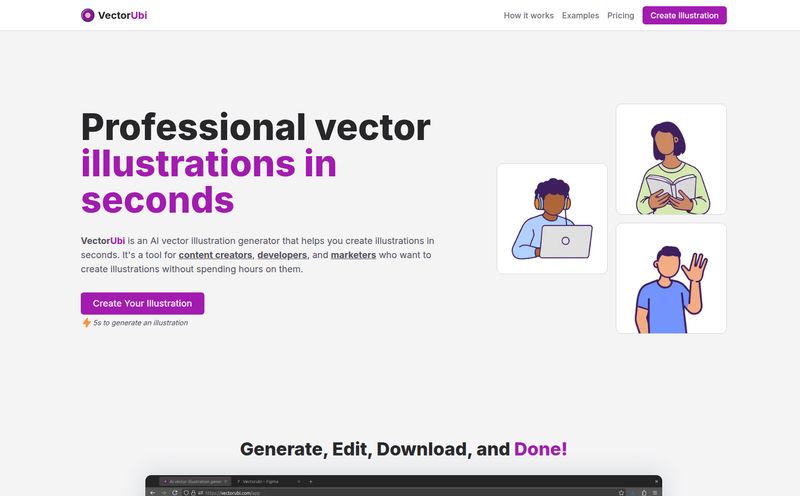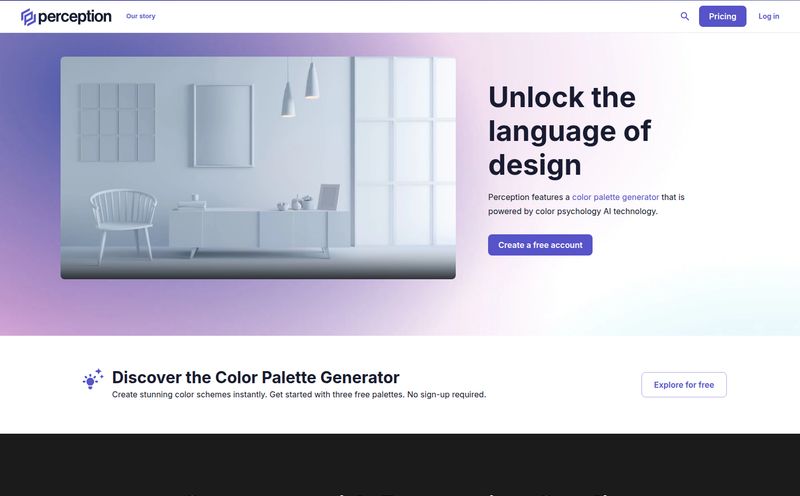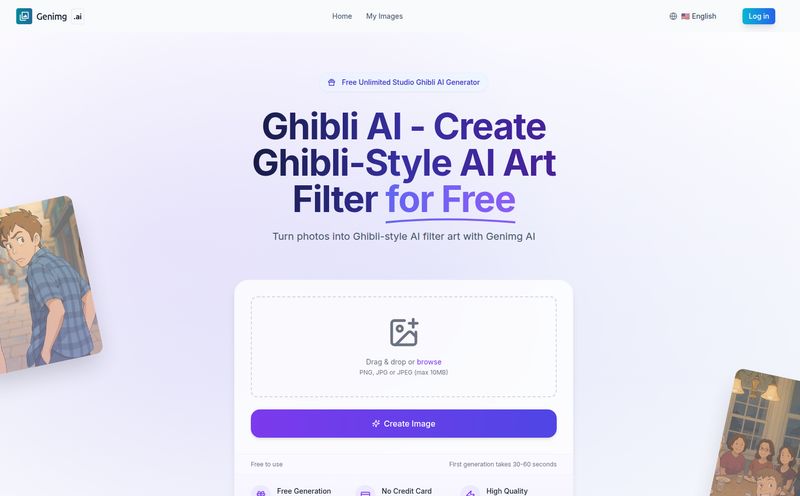If you’ve ever spent hours, and I mean hours, hunched over a light-pad or staring at a Wacom tablet trying to trace a photo for a background, you know the pain. It's tedious work. It’s the kind of work that makes you question your life choices. You want the beautiful, clean lines for your comic panel or design mockup, but the process can be an absolute soul-crushing grind.
So, whenever a new tool pops up promising to do the heavy lifting, my ears perk up. I've been in this SEO and digital trends game long enough to see a hundred 'miracle' tools launch and then fizzle out. This week, a little platform called SketchEdge floated across my desk. Its promise is simple and alluring: “Beautifully and faithfully. Extract line from photos.”
Sounds great, right? But in the current AI gold rush, you have to separate the genuinely useful from the digital snake oil. So, I put on my critic’s hat and took a closer look.
So, What Exactly is SketchEdge?
At its core, SketchEdge is an AI that does one thing: it takes your photos and images and extracts the line art. Simple. But where it claims to be different is in the quality of those lines. This isn't your old-school, clunky “find edges” filter in Photoshop that produces a jagged, lifeless mess. SketchEdge claims its AI generates soft, natural lines that look as if they were drawn by a human hand.
Their own site says they want you to use it for “design, manga backgrounds, and material references.” That’s a pretty specific and savvy target audience. They know exactly who feels this pain point the most. As someone who has dabbled in amateur comic creation, the words “manga backgrounds” immediately grabbed my attention. The sheer potential for time-saving is... immense.
The Magic Behind the ‘Hand-Drawn’ Look
The secret sauce, according to them, is an AI that doesn’t just trace contours but does so with a certain finesse. Think of it like the difference between a robot meticulously tracing a line with a technical pen versus an artist sketching it with a confident, fluid motion. One is technically accurate; the other has life. SketchEdge is aiming for the latter.
And from the main example on their homepage, I have to admit, I’m intrigued. It’s a pretty complex photo of a building with tons of foliage. Trees and leaves are notoriously difficult for automated filters to handle. They usually turn into a chaotic, muddy scribble. But the SketchEdge result? It's clean. The lines on the architecture are sharp, but the lines in the trees have a looser, more organic feel. It really does look less like a computer-generated-trace and more like a patient artist’s work.
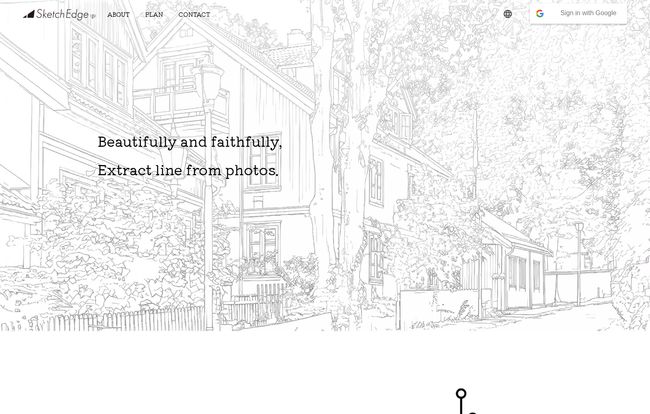
Visit SketchEdge
It’s just one sample, of course. I’d love to see a full gallery, to throw some different kinds of images at it—portraits, vehicles, interiors—and see how it copes. But as a proof-of-concept, that single before-and-after shot is doing a lot of heavy lifting, and it's doing it well.
Who is This AI Tool Actually For?
While anyone could have fun turning their vacation photos into coloring book pages, SketchEdge seems to have a few key professionals in mind.
Comic and Manga Artists
This is the big one. Creating detailed backgrounds is a massive bottleneck in comic production. For independent creators or small teams, a tool that can produce high-quality, stylistically appropriate backgrounds from reference photos could literally save them days of work per chapter. It lets them focus on what matters most: characters, storytelling, and paneling.
Designers and Architects
I can also see this being incredibly useful for graphic designers and architects. Need a quick, stylized sketch of a building for a concept presentation? Or maybe a simplified line-art version of a product for a user manual or infographic? Instead of tracing it by hand or fighting with Illustrator’s image trace function, you could get a solid base in seconds. Time is money, after all.
Hobbyists and Content Creators
Don't discount the casual user. This could be a fantastic tool for creating custom coloring pages for your kids, generating unique assets for a YouTube video, or just experimenting with a new artistic style without the steep learning curve. The ease of use is a huge selling point.
The Elephant in the Room: What Does SketchEdge Cost?
Okay, so this is where things get... weird. Naturally, after being impressed by the concept, I went looking for the pricing. I clicked on the “PLAN” link in their navigation bar, ready to see if this was a subscription, a one-time purchase, or a credit-based system. And I was greeted with… a 404 page. “This page could not be found.”
Huh.
That’s a bit of a red flag, or at least a yellow one. It could mean a few things. Maybe the tool is in a very early public beta and they haven’t finalized pricing. Perhaps its a side project and not fully fleshed out. The site's copyright says 2025, which is also a bit odd, suggesting maybe it’s not fully launched or a simple typo. The Japanese in the footer also suggests its primary market might be Japan, with the global launch still pending. Whatever the reason, as of right now, you can’t actually buy it or even see how much it will cost. This lack of transparency is its biggest weakness.
My Unfiltered Opinion: The Good and The… Mysterious
So, where do I land on SketchEdge? I’m cautiously optimistic. On one hand, the core idea is brilliant, and the single result they showcase is genuinely impressive. It promises to solve a real, nagging problem for a lot of creative people.
But on the other hand, the platform feels like a ghost ship. There’s no pricing, no gallery of examples, no information on limitations like image resolution or file formats, and no FAQ to answer the dozen questions that immediately pop into my head. It feels like an amazing movie trailer for a film that might not have a release date yet. The potential is sky-high, but the reality is still a big question mark.
I’ve seen tools like this before. Some, like the once-great Artomaton, had a similar vibe but eventually faded. Others become indispensable parts of the creative workflow. I'm hoping SketchEdge falls into the second category.
Frequently Asked Questions About SketchEdge
- Is SketchEdge free to use?
- As of late 2023, there is no pricing information available. The 'Plan' page on their website is broken, so it's unclear if it will be a free tool, a paid subscription, or a freemium model. My guess is we'll see a tiered plan eventually.
- What kind of images work best with SketchEdge?
- Based on their main example, it seems to excel at images with clear details and defined structures, like architecture and landscapes. It would be interesting to see how it handles softer subjects like portraits or animals.
- Can I use the generated line art for commercial projects?
- This is a critical question with no clear answer yet. Without a Terms of Service or a pricing plan that specifies usage rights, using the output for commercial work would be a risk. This information will be crucial for its adoption by professionals.
- Is SketchEdge better than Photoshop's filters?
- From the looks of it, yes. Standard Photoshop filters for line art are often very crude. SketchEdge's AI seems much more sophisticated, aiming for a natural, hand-drawn quality that automated filters typically lack.
- Who is behind SketchEdge?
- The website is minimal and doesn't provide much information about the developers. The Japanese text in the footer and the .jp domain suggest the team is likely based in Japan.
Final Thoughts
SketchEdge has all the makings of a fantastic, niche AI tool that could become a secret weapon for artists and designers. The concept is a 10/10. The execution, from what little we can see, looks promising. But its current state feels incomplete. It's an artist with a beautiful canvas and a single, perfect brushstroke, but we're all waiting to see if they can finish the painting.
I’ll be keeping a close eye on this one. If they can get their pricing page up, add more examples, and clarify the usage rights, SketchEdge could easily become a go-to recommendation. For now, it remains a fascinating and promising mystery.
Reference and Sources
- The official website for the tool: SketchEdge
- Archived page for a similar past tool, Artomaton: Artomaton via Wayback Machine
